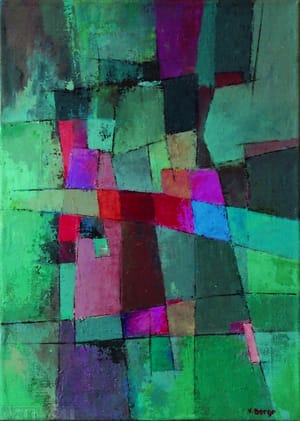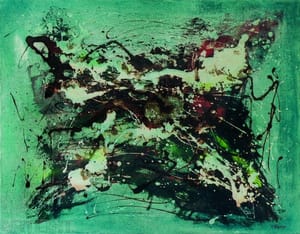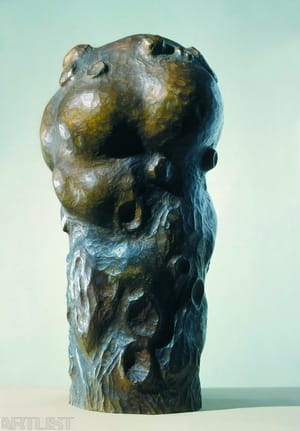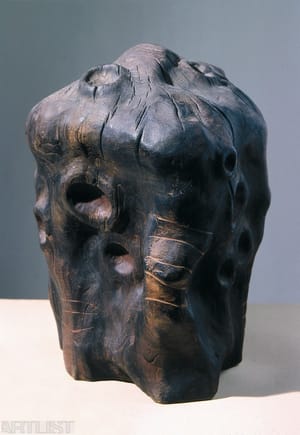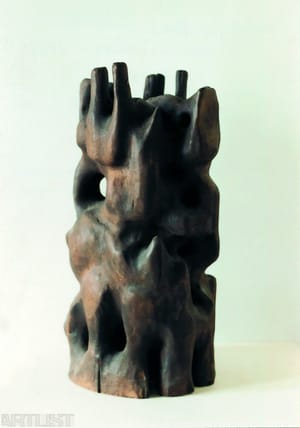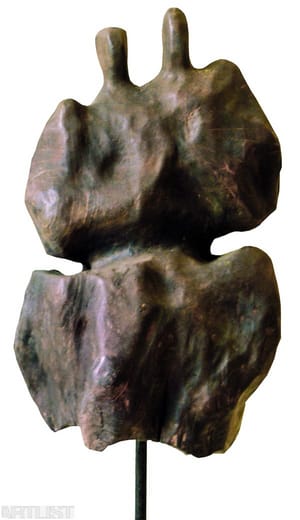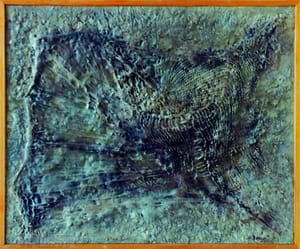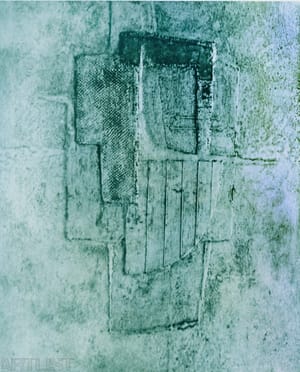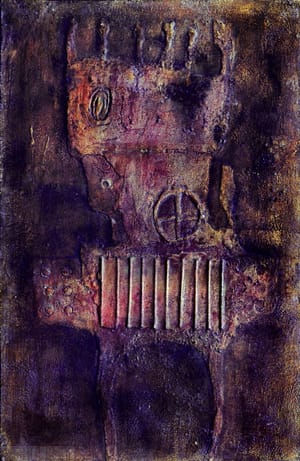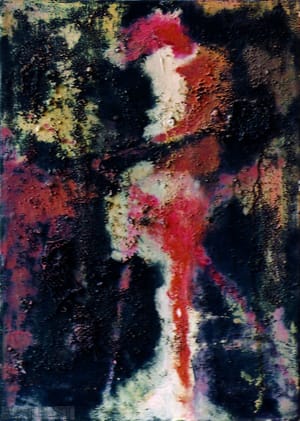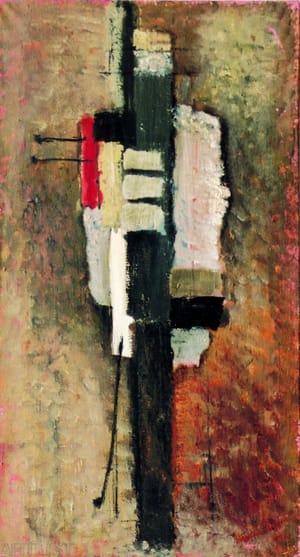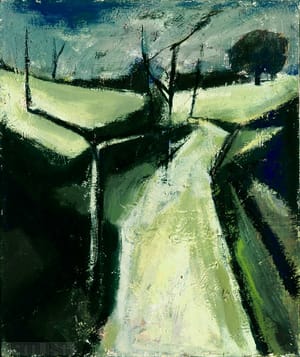- First Name
- Věroslav
- Surname
- Bergr
- Born
- 1928
- Birth place
- Ředice near Lomnice nad Popelkou
- Place of work
- Prague
- CSU Library
- ↳ Find in the catalogue
About artist
Věroslav Bergr, painter and sculptor, is one of the typical loners of the Czech art scene, a fact which makes it difficult to categorise his work within the Czech creative context. He maintained a distance from the main currents surrounding him all of his life. The only exception to this was his participation in the group A 59, which he co-founded during the relaxed atmosphere of the late fifties along with J. Hampl and other now mostly forgotten artists like M. Křištá, V. Mařatá, B. Zahradil and O. Fiedler. Although the group only lasted until 1965, it managed to organise three exhibitions. The first was a private show at Zahradil’s studio in Karlín, the second took place in 1963 in the New World street in Prague’s Lesser Quarter and was entitled Exhibition on the Wall, and the third was held in a gallery in Ostrov nad Ohří in 1965 in parallel with the exhibition underway by the Šmidrové group. Bergr’s friendship with J. Hampl, himself a friend of V. Boudník, a protagonist of one of the branches of Czech post-war abstraction, led Bergr to abstraction and structural technique. Bergr’s creative work directly reflects his life philosophy and creative approach. He did not give priority to a certain expressive form but moved between subjectivity and abstraction, finding a synthesis of both approaches in his final paintings. Lyrical landscapes alternate over the years with fantasy visions containing moral overtones, and some of his work is the creative transposition of music. Early on he was inspired by the impressionist music of M. Ravel, C. Debussy and L. Janáček. In an extensive cycle of abstract structural paintings created between 1958 and 1970 he attempted to find a reflection of the music of Gustav Mahler. From the middle of the fifties Bergr also concentrated on wood sculpture. Having sought the expressive possibilities of wood in his early abstract sculptures, in the sixties he arrived at the final form of the figural compositions, the result being a kind of “sculptural etude”. In the seventies and eighties he moved to biomorphous wooden sculptures and ensembles of graphic work and drawings, in which the constant threat of military and ecological catastrophe can be perceived. Bergr’s free creative output has its counterpart in illustrations. It was this that made him famous as an artists and illustrator. His illustrative work was closely related to the work of his wife, Zdenka, who wrote poetry and created outstanding translations. Bergr mainly illustrates poetry and lyrical prose, Russian prose writers and French poets alongside Czech authors. At present he has illustrated more than fifty books. Bergr has been again painting since the start of the nineties and has updated several of his original themes. In the paintings of the last two years he has been attempting to deal with the recent loss of his life partner.
- Author of the annotation
- Hana Larvová
CV
Studies / Employment:
1960-1988 Geodetic Research Center, Prague
1958-1963 College and High Art School of Václav Hollar
1950-1958 Ukrainian Art Academy, Prague, Professor Ivan Kulec
1948-1960 Meopta Praha
1943-1946 trained as a precise mechanic at Logia in Prague
Awards:
2010 Mezinárodní asociace kultury a umění Zlatá Chrpa, Francie / zlatá medaile a čestný diplom
2007 Euro Pragensis Ars/ Cena za celoživotní výtvarnou činnost, především za Mahlerovské téma
1998 Evropský kruh Franz Kafka, Praha /ocenění za sochařskou a grafickou činnost
- Member of art groups not included in ARTLIST.
-
1959 – 1965 Skupina A 59 (A 59 Group)
1990 Unie výtvarných umělců v Praze (Union of Visual Artists in Prague)
Exhibitions
- Solo exhibitions
-
2008
Lomnice nad Popelkou, Muzeum a galerie
2006
Lomnice nad Popelkou, Městské muzeum
1999
Praha, Na Zátorce
1998
Jilemnice, Zámek a galerie
Lomnice nad Popelkou, Městské muzeum
1997
Havlíčkův Brod, Galerie umění
Praha, Jalta
Praha, Galerie U Křižovníků
1996
Rychnov nad Kněžnou, Zámek
1994
Třeboň, Carpio nakladatelství a knihkupectví
1990
Terezín, Muzeum
Lomnice nad Popelkou, Městské muzeum
1989
Praha, Karlov, Muzeum
1986
Praha, Galerie D
1984
Hradec Králové, Krajská galerie umění
1975
Karlovy vary, Galerie umění
1974
Lomnice nad Popelkou, Městské muzeum
1970
Ostrov nad Ohří, Galerie umění
1969
Praha, Nová síň
Písek, Oblastní muzeum
Cheb, Galerie umění
1966
Praha, Výstaviště, Malá galerie lapidária Národního muzea
Benešov, Šímova výstavní síň
1964
Praha, Výzkumný ústav estetiky
1962
Praha, Výzkumný ústav farmacie
Lomnice nad Popelkou, Městské divadlo
1959
Praha, divadlo Paradox
- Group exhibitions not included in ARTLIST.
-
(selection)
2003
Praha, Národní knihovna, Ilustrace ke knihám Z.Bergrové
2002
Svitavy, Současná ilustrační tvorba
1998
Praha, Národní muzeum
Třeboň, Pražští malíři
1998/99/00/01 Havlíčkův Brod, Současná ilustrační tvorba
1997
Kladno, Výstava Sybdikátu
Praha, Galerie Miró
1995
Poděbrady, Galerie Regis
Praha, Mánes, Obrazy krajinářských inspirací
1995/96/97Havlíčkův Brod, Současná ilustrační tvorba
1994
Praha, Hosté Hollara
1993
Praha, Galerie Lazarská
1991
Německo, Tagernsee
Německo, Burgwedel
1990
Terezín, Památník, Výstava přírůstků
Praha, Mánes, Současná česká kniha
1988
Praha, Výstaviště, Pražský salon
1987
Liberec, Oblastní galerie, Soudobí ilustrátoři klasiků
1983
Praha, Středočeská galerie,
1974
Praha, Galerie U Řečických
1968
Praha, Galerie bratří Čapků, Vinohradský salon II
1967
Praha, Výstaviště, Pražský salon
Benešov, Šímova výstavní síň
Praha, Galerie bratří Čapků, Vinohradský salon I
1966
Rychnov nad Kněžnou, Zámecká galerie
1965
Ostrov nad Ohří, Galerie umění
1963
Praha, Nový svět, Výstava na zdi
Veselí nad Lužnicí
1960
Praha
1957
Praha AZKG Vysočany
1956
Praha, Meopta Košíře, S výtvarníky NDR
- Collections
-
National Gallery, Prague, Museum of Czech Literature, Prague, Municipal Gallery, Prague, Gallery of Modern Art, Hradec Králové, Art Hallery, Karlovy Vary, Terezín Monument, Terezín, Art Gallery, Lomnice nad Popelkou, Zirc Art Gallery, Hungary, Krakow Art Gallery, Poland.
Monography
- Monography
2008 Věroslav Bergr, malíř, sochař, grafik, Oftis Ústí nad Orlicí
1992 Věroslav Bergr, Astra
